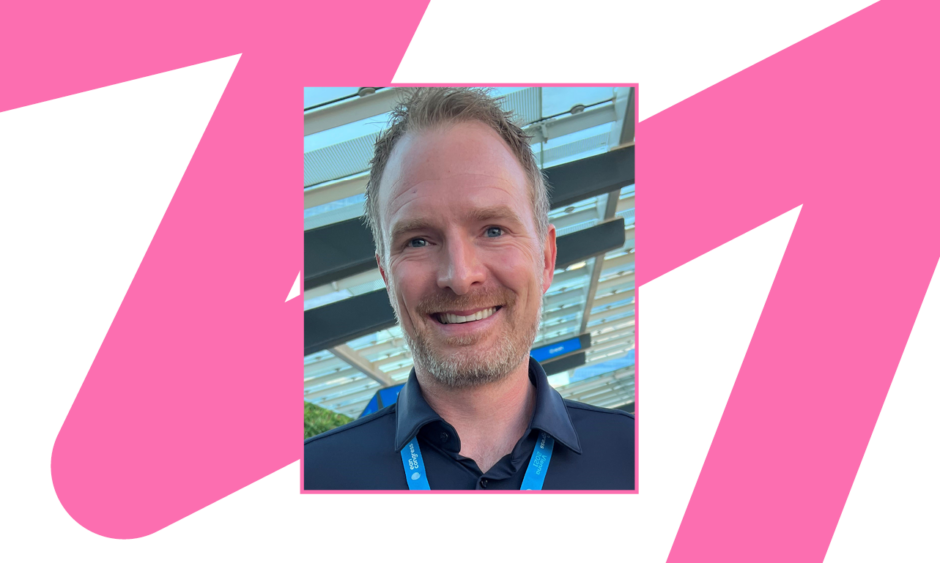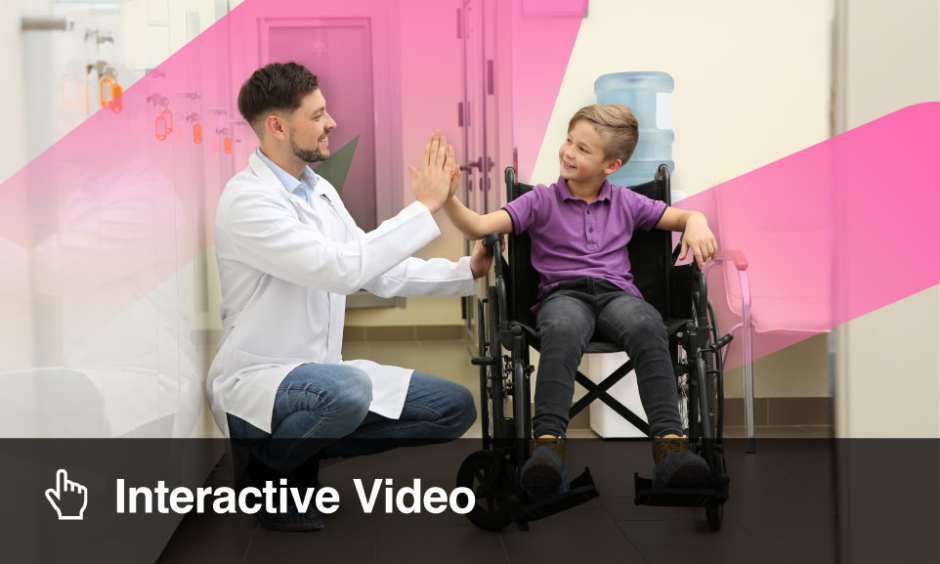Einar August Høgestøl | Associate Professor, Department of Psychology, University of Oslo, Norway; Doctor-in-Training, Department of Neurology, Oslo University Hospital, Norway; 2022 Author of the Best Presentation in Basic Neurology at the European Academy of Neurology (EAN) Tournament for Neurologists in Training
![]()
What led you to pursue a career in neurology and psychology?
This is always a tricky question to answer. As a student, I shifted a lot based on the topics we were going through at the time. At one point I was certain I would be a paediatrician, while later it was geriatrician. When I finally had the opportunity to choose my course, I applied for a lot of different residencies in a plan to move closer to my hometown. Quite surprisingly, the first contract I was offered came from the neurosurgical department, where I started my career and spent the next year and a half. Even though this was a very exciting and all-consuming career, I wanted to combine research with more neurological insights. I was lucky that a new opportunity came along, and back in 2015, I was accepted as a full-time PhD candidate at the university. Since then, I’ve never looked back, and have enjoyed a mix of advanced imaging research in neurology and psychology, which later combined with a clinical residency in neurology. I have always jumped on the next opportunity, building on previous experience, but always going forward.
You completed your PhD thesis on MRI and biomarkers for early multiple sclerosis (MS). What initially sparked your interest in this particular area of neurology?
Since I was a young kid growing up with computers and the exploding technological evolution, I have always had a special interest in computational science. When going into medical school in Norway back in 2006, the bioinformatics and computational advances were not deeply included as part of the curriculum. I guess this was just the way things had been done for years, but when finishing medical school, I felt that part of me was never utilised to its full potential. For my PhD topic, I was lucky to find the right supervisor at the right time. Professor Harbo saw potential in me, and I was able to mix together the project to follow my interests. We knew I had to do a follow-up study on patients with MS, but mixing this with advanced imaging research was both a suggestion from Professor Harbo and a wish on my part. We then joined forces with Professor Westlye and his team at the Multimodal Imaging Group at the Norwegian Centre for Mental Disorders Research (NORMENT) in Norway, which we knew was at the forefront of imaging research, and had great potential for future collaborations.
You run a Facebook page for your MS research group in Oslo. Can you talk about its purpose and why it provides value?
In Norway, we have many young adults with MS. One of the main tasks as a researcher is disseminating knowledge to people, and not just to other colleagues that you encounter on an almost daily basis. I noticed early on that young people with MS in Norway had a lot of questions, and no specific platform for voicing them within the MS research community. They had their own, closed Facebook group called ‘MS-friends’, a place that I knew from my patients had a lot of discussions on MS research and rumours. Also, the national MS union had their own Facebook page with a lot of followers, but their standing was more of a political one. I felt obligated to start a Facebook group that had its basis in our research group, mostly to inform on ongoing research both locally, nationally, and internationally. I felt it was often necessary to ‘translate’ new research to people with the disease, and to put it in context. It has also been a way to inform on the views or standpoints of fellow neurologists and researchers on important matters that also affect people with MS. People with MS are often very up to date on their disease, and I hope that our page on Facebook has been helpful in some way.
You are set to present an abstract of your novel research, ‘Brain age estimation by machine learning outperforms brain parenchymal fraction as imaging marker in multiple sclerosis’, at the EAN’s 2022 Congress. Could you tell us a little about this research and its implications?
Since 2017, NORMENT and the MS research group has had a growing interest in the application of modern artificial intelligence (AI) methods in imaging research. Estimating age based on MRI scans is nothing new, and was first done in 2004. Recently, large imaging repositories and improved computational efficacy has enabled us to develop more sophisticated models to apply in a research setting. We published the first paper on brain age estimation in MS back in 2019, but have since collaborated together with NORMENT and also the Karolinska University Hospital, Stockholm, Sweden, to expand and explore this in a much larger cohort of people with MS, using an established machine learning model based on a training set of over 35,000 healthy individuals. This enabled us to dig into a unique, real-world MS cohort to discover robust associations with many clinical features. It was especially important for us to be able to compare this model with the established imaging marker in MS, brain volume. We hope this will spur even more interest across the MS research community, and then in the future as a potential imaging marker to improve future MS care, both from the onset of the disease and throughout the disease course, as a supplementary imaging tool being supplied at each MRI scan any person with MS undergoes (or any other person undergoing an MRI scan of the head).
How widespread do you think knowledge is of machine learning and its implications in MS diagnosis and treatment?
The application of AI methods has been a hot topic over the last 5–10 years in the MS community, yet it has still only been applied in a research setting. Some efforts have, as far as I know, been made to explore it in advanced imaging research by mixing different imaging modalities to capture disease progression. Already, across different medical topics, like skin biopsy, X-ray diagnoses, gastroenterology with colonoscopy, or a CT scan to investigate for stroke, there have been many large diagnostic breakthroughs incorporating different AI methods as supplementary tools.
As a contributor to the EAN Congress 2022, can you talk about the impact the EAN has on neurologists and patients?
I have been attending the EAN congress each year since it was organised here in Oslo in 2019, which was the fifth time this congress was held. That year, I was part of the local committee, and helped to organise the site visit at our hospital. To combine the complete neurological field in such a far-reaching congress is extremely hard. There are other congresses which are more specific, such as the European Committee for Treatment and Research in Multiple Sclerosis (ECTRIMS, organised for the 38th time in autumn 2022), and the European Stroke Organisation Conference (ESOC, organised for the eighth time in May 2022). Such conferences have a greater impact on specific fields of research. With the EAN congress, I can both attend the presentations that I’m most interested in while also being able to get a broader update across many of the different branches of neurology. This benefits us as researchers and clinicians more directly, but also patients down the line, when the clinicians travel back home to our hospitals fresh with new knowledge on current state-of-the-art techniques.
What topics are you hoping to see in focus at this year’s EAN Congress?
For this year’s EAN congress, I, first of all, am looking forward to meeting up in person again with great colleagues from across Europe, and to get a general update across different neurological branches, such as epilepsy, stroke, headache and migraine, MS, and movement disorders. I hope that there will be time to see some small glimpses of the great city of Vienna, Austria, where I have not been previously. Regarding MS research, I have always had a sweet spot for advanced imaging research, but am also looking very much forward to the Camillo Golgi Lecture by Professor Hans Lassmann, with the title ‘The Contribution of Neuropathology to Multiple Sclerosis’. There are also some other topics on MS treatment with high-efficacy treatment that will be very interesting to attend, where we can compare how the Norwegian approach aligns with the bigger countries in terms of strategy and also in terms of what we focus on for signs of disease progression. An update on the ‘real MS’, also known as ‘smouldering MS’, is also a special favourite of mine, as many people with MS experience progression independent of relapse activity, and we currently lack the complete picture of what causes this.
You are currently working in collaboration with NORMENT. Could you tell us about the work you do there?
After completing my PhD thesis and defence, I was approached by Westlye in the Multimodal Imaging Group of NORMENT to join their team in two large studies on brain imaging in the BRAINMINT project. This is a European Research Council (ERC)-founded project that focuses on brains and minds in transition, with a special focus on two important transitions in life, namely adolescence and pregnancy. We take a broad approach to both of these two groups, and in addition to MRI scans of the brain and body, we also perform electroencephalogram, blood sampling including genetics, neuropsychological tests, and general screening. For the pregnancy study we are recruiting females who plan to become pregnant in the near future, and will examine them before and after pregnancy, with a control group of those not becoming pregnant. As of now, we already have over 400 females and over 400 teenagers recruited, and we are looking very much forward to digging into these datasets when they become more complete.
Much of your extensive published work has focused on MS. What do you believe are the current gaps in the literature, and what topics merit greater attention?
In MS research, there are many new avenues that will be given increased focus for research in the coming years. From what I know, and from my perspective, I hope there will be an increased focus on the neurodegenerative part of the disease. In a couple of years, we will also see the results from all of the ongoing haematopoietic stem cell transplantation randomised control trials, to finally get the answer to which people with MS should be treated with haematopoietic stem cell transplantation from the beginning, compared to when we see progression of the disease. The term smouldering MS is catching hold of researchers, and to disentangle this aspect of MS will potentially give new insights and new treatment possibilities. Also, how we monitor people with MS has to be more adapted to the digital era, with home monitoring, digital screening, and the inclusion of patient-reported outcome measures in the follow-up of MS care. We need to include new biomarkers in MS care, such as neurofilament, cognitive screening, potentially genetic guidance, and supplementary tools for MRI scans of the brain. Last but not least, new research avenues opened after some big breakthroughs following the Epstein–Barr virus (EBV) papers from 2021 and 2022. Could we potentially avoid getting MS by developing and incorporating an EBV-vaccine in the children’s vaccine programme? Or could targeted EBV-treatment for those with MS be a new potential treatment approach?
Are there any innovations on the horizon in neurology, and more specifically in MS, that you think are particularly noteworthy?
As mentioned in the last question, I hope to see some targeted treatment possibilities for the neurodegenerative aspect of MS, and also some EBV-related treatments. During the COVID-19 pandemic, I have also shifted many of my follow-up appointments to video calls or just a telephone call. This implies that there is no current need to investigate patients, but in that case, I hope there will be more opportunities for home-monitoring, digital screening for MS symptoms, and cognitive performance. With MS being effectively countered for many with the early high-efficacy treatment, we need more sensitive tools for monitoring the disease. As of today, we are merely asking for side effects of the current treatment, looking for clinical relapses, and reviewing the neuroradiological assessment of annual MRI scans. Based on what the research has shown us in the last decade, we need to include many more aspects in the follow-up of MS patients. This is, however, impossible with the lack of resources and time each patient gets with their neurologist, so here we need to explore and develop new tools to simplify and implement this in a clinical setting. Lastly, I really hope we can see some effective treatments for fatigue, as this is not only a MS-specific symptom, but a debilitating symptom across the medical field.
As a researcher, where can we expect to see your focus lie in the coming years?
I was appointed subgroup leader of the MRI group in the MS research group here in Oslo last year. I have many ongoing projects across advanced imaging research, and hope to also broaden my perspective a bit to include stroke, motor neurone disease, and neuro-COVID. I get to be part of the forefront of imaging research through my position at NORMENT, which I also hope to be able to bridge across to other neurological diseases. Brain health includes all disorders affecting the brain, so in that understanding, I’m just bridging two parts of brain health aspects together where they belong. I always try to recruit and collaborate with people more capable than myself in a specific field of research; then we find common ground on the topic in focus to move the research field a bit further. As for MS, my big focus at the moment lies in AI methods and imaging research. Here, I hope we will see some big breakthroughs, both for MS but also across other parts of neurology. As of now, we are merely scratching the surface of the data being available from a clinical MRI scan of the brain by relying on the visual assessments alone. There is much more information in brain scans that will help us to better tailor treatment and understand the diseases, to improve patient care. I hope to be a part of this in the coming years.








